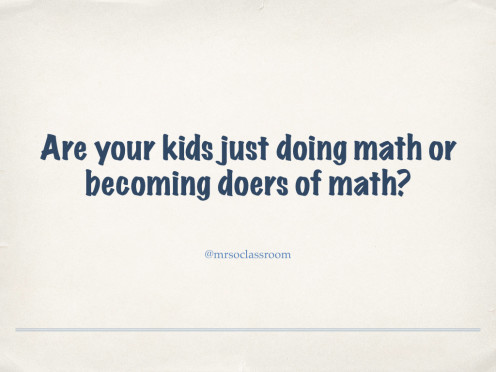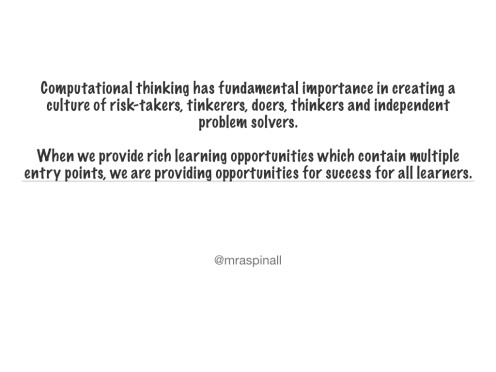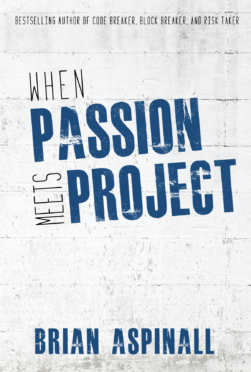I just finished reading ‘Math war’ more about words than numbers, says Peel teacher. This Peel teacher just happens to be my good buddy Jonathan So and he will give a keynote on the issue April 2 at an annual Peel conference.
In the article Jonathan pushes to make kids doers of math instead of just doing math.

The difference focuses more on creating an open ended math environment (Seymour Papert called this Mathland) and less on drill and skill, which unfortunately, is the model our math textbooks follow.
As we continue to push for more computer science (well sadly just coding) in our schools, we should consider the similarities between Mathland and coding activities. Learning to code (well, think computationally) has fundamental importance in creating a culture of risk-takers, tinkerers, doers, thinkers and independent problem solvers. When we provide rich learning opportunities (math or coding) and problems which contain multiple entry points and methods in which they can be solved, we are providing opportunities for success for all learners.
Open ended problems yield themselves a more natural differentiated instruction as kids perceive problems and solutions differently.

Unfortunately, the skill and drill model tends to set a standard of learning at which all are to adhere.
The point is, getting kids to code (and more than just the tutorials) exposes them to an environment in which failure is a learning opportunity, risk-taking is a necessity, and collaboration is crucial.
With regards Science, Technology, Engineering and Math (err….STEM), David Jonassen classifies “meaningful learning” using five categories:
Active: Students should be actively engaged in their learning – typically this will be doing something on a computer, but it could also be taking part in a discussion or an activity away from the computer, such as role-play to illustrate how packets of data travel across the internet.
Constructive: This can be understood both in the sense of constructing meaning, developing students’ mental model of computation and technologies, and in the sense of making something, whether this is a computer program, a presentation or a blog post.
Intentional: Ideally, students should have some degree of choice over how they tackle a task or project, or perhaps even over the task or project itself. It is unlikely they will learn much from copying a worked solution off an IWB screen, and many projects can be constructed or adapted to allow plenty of scope for individual creativity.
Authentic: Wherever possible, try to link activities with students’ own experiences, both within and beyond school: cross-curricular projects work very well, as do those linked to the life of the school itself, or to students’ experiences of technology.
Cooperative: Computing, in both industrial and academic contexts, is a collaborative endeavour. Where possible, construct activities so that students can work together, supporting one another in their learning.
The term “industrial model” of education tends to rear it’s ugly head often. This suggests a school community that is preparing kids for factory work. Rows, lines, conformity, simple routine tasks, etc. as if these are all bad ideas by today’s industry standards. Sure, factories are automated and most offices contain collaborative spaces but what should we do with the notion of compliance? Perhaps we should redefine compliance as a noisy culture of engaged and empowered people – both teachers and students. Perhaps compliance should now mean to adhere to a new set of standards where the level of volume isn’t an indicator of success. But what do we do with “rote” learning? Skill and drill still have their place. The difference is we shouldn’t rely on the speed at which kids can regurgitate math facts as a point of assessment. There is nothing wrong with memorizing multiplication tables, unless we are putting kids on the spot to shout out answers when the timer is going and a grade is attached.

 For all the kids who grow up in a small town and think they don’t stand a chance. You do. I was once that kid.
For all the kids who grow up in a small town and think they don’t stand a chance. You do. I was once that kid.